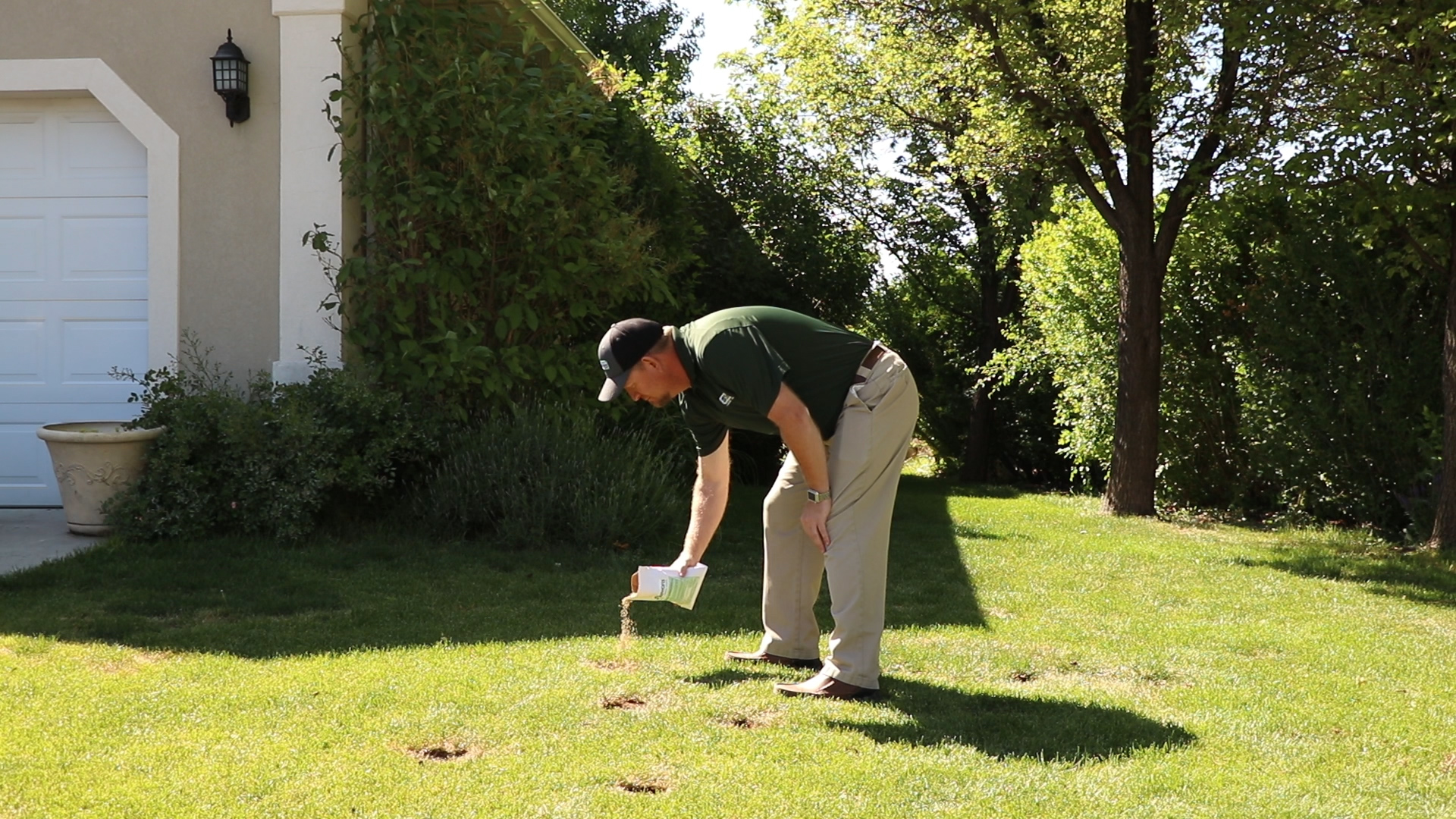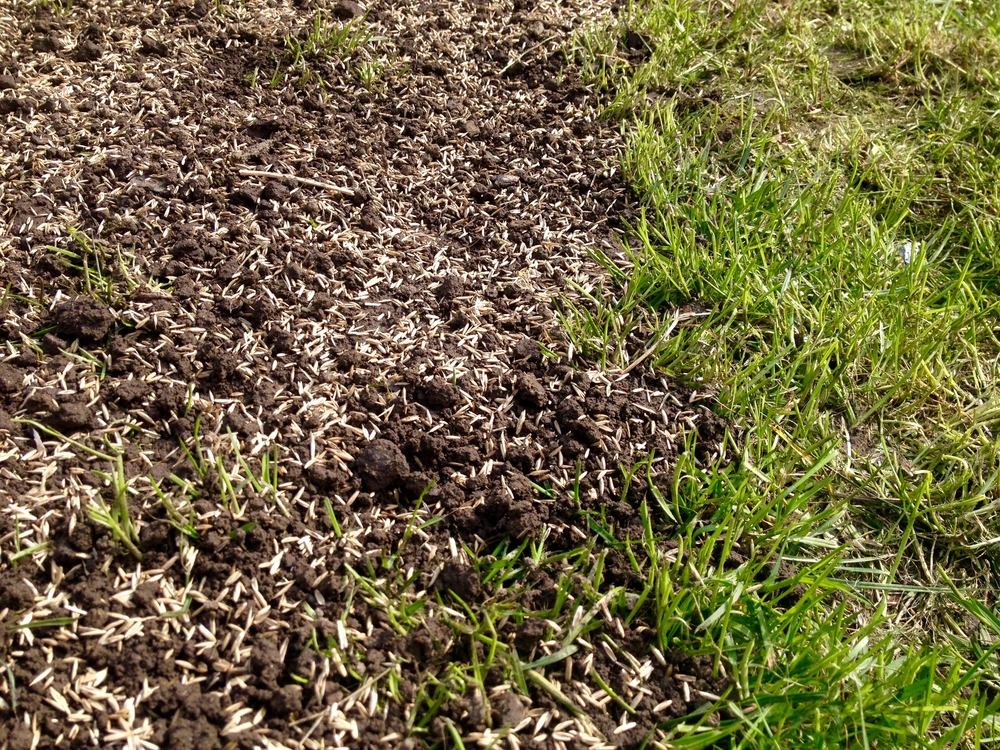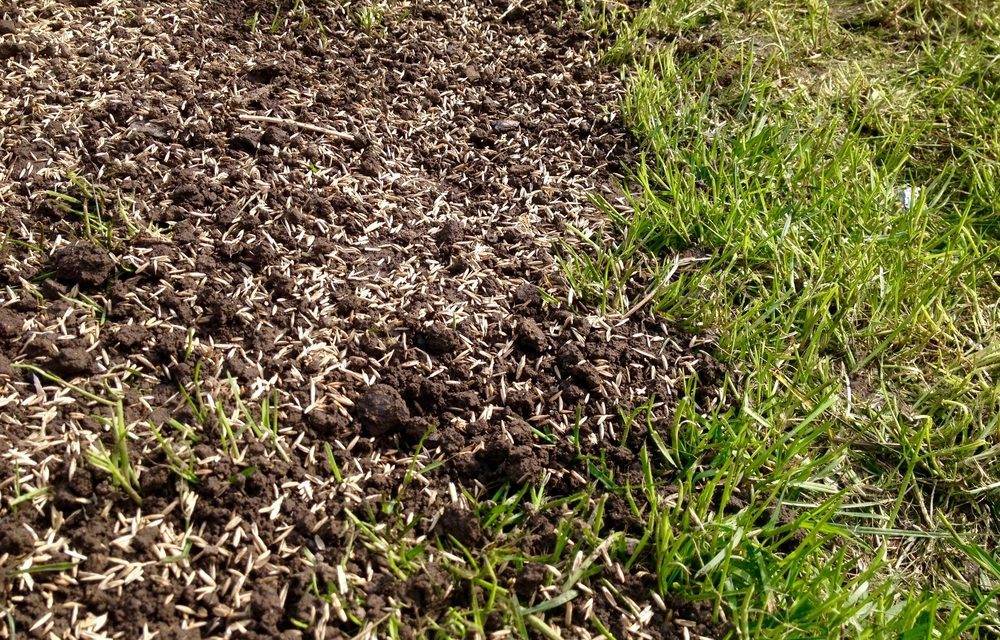Nothing gets in the way of having the perfect lawn like a large spot of dead grass. Not only is this a major eyesore, but it can also leave the lawn vulnerable to other problems like weeds and grubs.
You can follow this step-by-step process to help your lawn recover from dead spots:
- Remove the dead grass.
- Prepare the soil.
- Plant new seeds or sod.


Remove the dead grass
Dead grass is notably different than dry grass, which has a yellow color that will return to green once it is watered. Dead grass is a dingy brown color, starts to thin out over time, and cannot be revived.
The first step to fixing dead spots is to pull up the dead grass and the top layer of soil. This will allow the new grass to grow in fresh soil. You should be able to efficiently remove the grass with a shovel and a rake, but you may need to use a sod cutter to separate the dead grass from the green grass.
Prepare the soil
The soil beneath the dead patch of grass will likely look compacted. Hard soil is difficult for plants to grow in, so you’ll want to till the soil. Loosen the top three inches of soil, then mix in some organic compost. This will give the soil a boost of nutrients so your new grass can grow well. You may also want to dampen the soil slightly to help the new grass take root.
Plant new seeds or sod
Next, you’ll need to choose either to re-seed or lay sod in the area.
Re-seed


Re-seeding works best in small areas because the grass can easily fill the area. If you’re re-seeding, choose a high-quality grass seed that is rated well for your climate.
After spreading the seeds, sprinkle a thin layer of compost or peat moss over the soil to protect the seeds from threats—such as wind, water runoff, or birds—that could ruin the seeds. Water every day until the seeds start to sprout—then enjoy your beautiful new grass!
Lay Sod
If you have a large portion of grass that needs to be replaced, use sod rather than seed because sod has a better chance of combining well with the healthy, green grass.
If you choose to use sod instead of seed, you may need to rent a sod cutter to help you remove the large patch of dead grass. Once it’s removed and you’re ready to lay the sod, make sure you dig deep enough that the sod lays flat and is at the same level as the lawn around it.
Follow these steps for replacing large dead spots with sod:
- Cut out the old, dead lawn.
- Dig down just deep enough so the sod will lay even with the rest of the grass around it.
- Add compost to the soil so the new sod will have access to extra nutrients.
- Loosen and dampen the soil to allow grassroots through.
- Lay the sod so it covers the entire area, and water it well.
- Keep it well-watered for the next few days until the new grass takes hold.
Is your lawn struggling to stay healthy and green throughout the year? Stewarts can help! Stewart’s lawn care service includes fertilization, weed control, and grub control in addition to a free respray guarantee. Call or text 801-226-2261 today for a free quote and more information!



